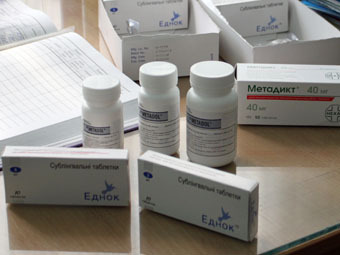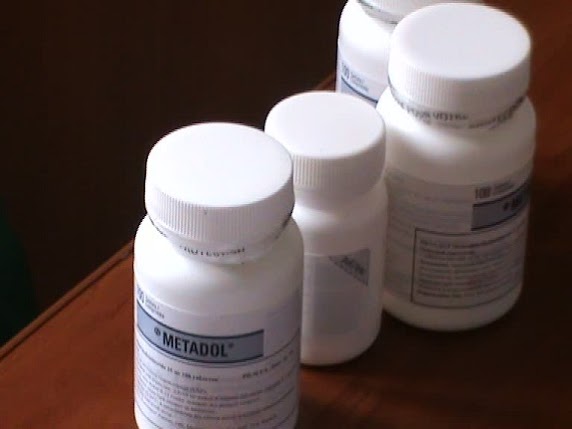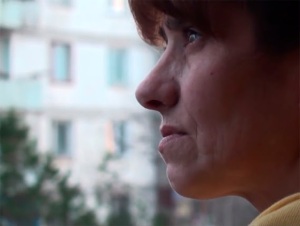Life Goes On in Russia’s Crimea
Here are the final 2 blogs in the series of 4, from Igor Kuzmenko’s personal blogs of Crimea, in particular, life for those who once lived under Ukraine law and received Opiate Substitution Treatment (OST) such as methadone only to lose their new found stability after the region’s Referendum when the majority voted to go back to Russian governance. This effectively closed the doors for good on OST leaving over 800 people in shock and despair. So what is a person withdrawing from treatment supposed to do? What would you do if your access to methadone or buprenorphine was cut off almost overnight…? Igor gives us a frighteningly honest account of what happened to the OST community in Crimea..Here is part 3 and part 4.
NOTE: Part one and two are a bit further down this blog and the whole series has been reprinted here courtesy of INPUD’s blog and you can also read them in Russian at ENPUD’s website /blog. Thanks to Igor for a fascinating insight into Crimea for the drug using community, and INPUD for reprinting.
RIP Crimean OST Program, 2006
Part 3
Meanwhile life in the Crimea went on. As spring approached, people continued to go to work, and students proceeded to attend their studies. Very few inhabitants of the Crimea understood that 806 people of the region’s population, were literally on the way out.
Death From Abstinence
As I wrote previously, the first patient in Simferopol died around the beginning of April. He was about 50, was seriously ill and couldn’t move at all. Everything was good with him before the March events; the doctor wrote a prescription for him so he could get liquid methadone and he continued to use Opiate Substitution Therapy without leaving the apartment. But after March 16, everything changed and the prescription form of OST was suspended in Crimea. It goes without saying that any coroner wouldn’t determine a cause of death as ‘death from abstinency’. But something tells me that if he continued to have the opportunity to receive methadone, he would be still alive.
“But after March 16, everything changed and the prescription form of OST was suspended in Crimea.“
Bupe Not Methadone
Actually, there were not so many people receiving OST on a prescription basis in the Crimea. And there were a few reasons for that. First, the prescription form is possible only for those people who receive buprenorphine in Ukraine. There are cities where all clients of the buprenorphine program constantly receive it using a prescription. But everything is much more difficult when dealing with methadone.
The medicine used in a Ukrainian methadone OST program – known as ‘Metadict’ and ‘Metadole’ – are both made in Germany or Canada. Both of them are in the form of tablets, not syrup. They come in blister packs of 10 tablets: 25 mg each, (total 250mg) or in bottles of 500 mg. But it is impossible to get it using a prescription because according to the laws of Ukraine a single prescription dose of any narcotic substance mustn’t exceed 112 mg. The blister packs are not allowed to be cut up or tablets prescribed separately from the packaging. There were individual cases when patients could receive a liquid methadone on prescription, but only on a commercial basis and it is very expensive.
Methadone Not Bupe
In the Crimea, it is different. Slightly more than 50 people out of 806 patients received buprenorphine, the others got methadone. About 10 people out of those 50 had the opportunity to receive buprenorphine on prescription though not on a constant basis. They got it occasionally – because of a business trip, illness or going on a holiday.
There is also one more reason for prescriptions being shut down in the Crimea after “the referendum”. Doctors were afraid to write out prescriptions on both of these substances because they are actually illegal in Russia and so employees of drugstores in turn, were afraid to sell the medications and fill these prescriptions.
May 20th – D Day
May 20 was the last day when people could use the OST program in the Crimea, so after that each of the 806 person’s who were prescribed had to make one’s own choices of what to do. There were only four options:
- String oneself up to stop using drugs forever
- Go to Russian local rehabilitation centers praised by numerous Russian “guests”;
- Continue using OST by moving to Ukraine;
- Go back to using “street” drugs.
According to my knowledge, no more than 20-30 people went to Russia for rehab. Many of them couldn’t undergo an entire “rehabilitation course” till the end and ran away. However, some stayed in rehab for the whole term. One OST client from Simferopol died in St. Petersburg during the rehabilitation process. He died of an overdose.
Slightly less than 60 people risked going to Ukraine. This option was, undoubtedly, the most realistic of all. For example, in many cases it was necessary to buy tickets at ones’ own expense to go to Russia, but in Ukraine both tickets, accommodation and food were paid for you.
Should I Stay or Should I Go?
Nevertheless, as you can see by the number of people who went to Ukraine, it didn’t become a mass phenomenon. Partly, this was due to mass media propaganda which colourfully described the various ‘atrocities’ of Ukrainians in relation to the inhabitants of the Crimea who risked leaving and facing the ‘mockeries’ of the Ukrainian border guards who were taking away passports on the border and other nonsense. The other reason that many of inhabitants of the Crimea never left for Ukraine, was they had neither friends, nor relatives there and simply couldn’t imagine where they were supposed to go.
Now many of the clients of OST who had gone to Ukraine, already found a job there, and all without exception found rented accommodation and received some financial support from the project MBF “Renaissance”.
“It turns out that more than 600 people started taking street drugs again.”
From those people with whom I was in contact no more than 10 people could finally stop taking drugs of any kind. If you make simple arithmetic operation, it turns out the following:
806 (total number of clients in the Crimea OST program) minus 20 (number of those who undergone “rehabilitation” in Russia), minus 60 (left to Ukraine), minus 50 (suppose not 10, but 50 people stopped taking drugs) = 676.
About 30 already died out of that number of people. It turns out that more than 600 people started taking street drugs again. And many of them during many years of using the OST program found work, started a family and gave birth to children. Now it’s all over.
Igor Kuzmenko
Below is the final part of Igor Kuzmenko’s series on Crimea. Please feel free to add your thoughts and comments and let us know if you have a story to tell from your country.
RIP Crimean OST Program, 2006
Part 4
How to reach those people who made decisions on the issues of Opiate Substitution Therapy (OST) in the Crimea? Which words should be found to explain to them that situation where 800 drug users under constant medical and psychological control, employed and reintegrated, is much better than 800 people coming back to being criminalised in the drug trade? How could one explain what the blue sky is to the person born blind? How it is possible to explain to a mother, whose son quietly had been using OST for several years, stopped breaking the law, started a family and found a job, why he has died of an overdose during the rehabilitation? Who benefits from it?
“What we had been created for several years was destroyed in two and a half months.”
Probably, for those people who have nothing to do with OST and don’t have the slightest idea of what this therapy actually is, it is only a “change of the dealer” – earlier I bought drugs on the street and now I get them free of charge from the doctor. But actually OST is a difficult system in which the process of taking methadone or buprenorphine is only a small part of the whole process. OST is a complex of actions that allow the person to live a more or less productive life. Many elements of this scheme, such as the ART (Anti Retroviral Therapy*), anti-tubercular therapy, are strongly connected with OST. There is no point in pretending otherwise, many people started to use ART and to look after their health only after they visited the OST site.
Stability and the Street
What we had been created for several years was destroyed in two and a half months.
So, more than 600 former people from the OST programs have taken part in the illicit drug scene again since May. What do our people use to medicate themselves with now?
Lyrica. This beautiful and romantic word is actually the name for one of the biggest problems of the Crimean drug scene nowadays. Lyrica (active agent – Pregabalin). An antiepileptic and anticonvulsive medical product made by Pfizer Company. Many ex-OST patients are suffering from its over-use today. It has excellent medical qualities if you take it on prescription, but it causes terrible side effects and dependence for those people who try to combat withdrawal syndrome with its help. It is sold freely in any drugstore in the Crimea and costs not so much.
Only a total deficiency of any medical products in local drugstores is saving others from the serious consequences of pharmaceutical drug dependence in the Crimea.
“Now I hear from people who were full of vim and vigor, who had plans for the future just two months ago, that they want to die.”
Checks. “Checks” is how people name portions of raw opium from which it is possible to extract heroin, if you add acetic anhydride to it.
“Checks” existed in the Crimea as far back as I can remember. It is a good reliable way to quickly recover from withdrawal syndrome. You could get “checks” quite easily at any time. But after the OST programs were closed, hundreds of drug users suddenly entered the market (more than 200 people just in Simferopol! ) and devastated all the opium reserves in the Crimea. Moreover, new anti-narcotic structures represented by the Russian police (all police officers came to the Crimea from the Russian cities – Perm, Kazan, Moscow, there are not any local representatives in police) and by Federal Service on Control of the Drug trafficking (FDCS) – the nightmare of the Russian drug users. The increase in number of “checks” users led to a decrease in its supply and importing from Ukraine became a big problem.
By hearsay, so as not to suddenly miss an opportunity to increase profits, dealers began to add foreign substances to their product, it could be harmless substances or hard shit like home-made methadone. New police forces and new circumstances around buying drugs has led to the situation where purchasing “checks” poses a big problem now.
Heroin. I often hear from people in the Crimea that there is lot of cheap heroin here now. But I couldn’t find even one person who saw or tried that heroin. So I can draw a conclusion that there is not and there was not any heroin in the Crimea.
Krokodil. I assure you that if it wasn’t for a deficiency of medical products in drugstores, including codeine-containing ones, “krokodil” would now be problem No. 1 in the Crimea. But every cloud has a silver lining. People just can’t find the substance that you should use to make this poison, and that’s why krokodil isn’t present in the Crimean drug scene.
“Well, this is how it goes.”
Well, this is how it goes.
Now I hear from people who were full of vim and vigor, who had plans for the future just two months ago that they want to die. Former patients aren’t able to go to work because they suffer from never-ending withdrawal syndrome. Their families suffer as much as they do.
I am an optimist. My glass is always half full. But I can’t see anything optimistic in the future of those from the last OST programme in Crimea.
Well, who knows, maybe I’m mistaken.
Written by Igor Kuzmenko
*ART: Anti Retroviral Therapy is a medical treatment for HIV/AIDS
All 4 parts in the Crimean OST series has been written by Igor Kuzmenko and here’s a massive public thank you to him for his really honest and personal insights into what it has been like for our peers in the region, and answering many of our questions too, I’m sure. The blogs were translated from Russian into English by the very professional Daria Mighty, and we are indebted to her speed and accuracy, thank you Daria! (The Russian version is available atENPUD)
If you want to find out more about the drug using community and its issues in the region of Eurasia, or you are living in that part of the world, check out INPUD’s sister organisation on their website ENPUD (The Eurasian Network of People who Use Drugs). You can become a member, read other blogs from Igor and others and find out the news and views on drug issues and politics.




